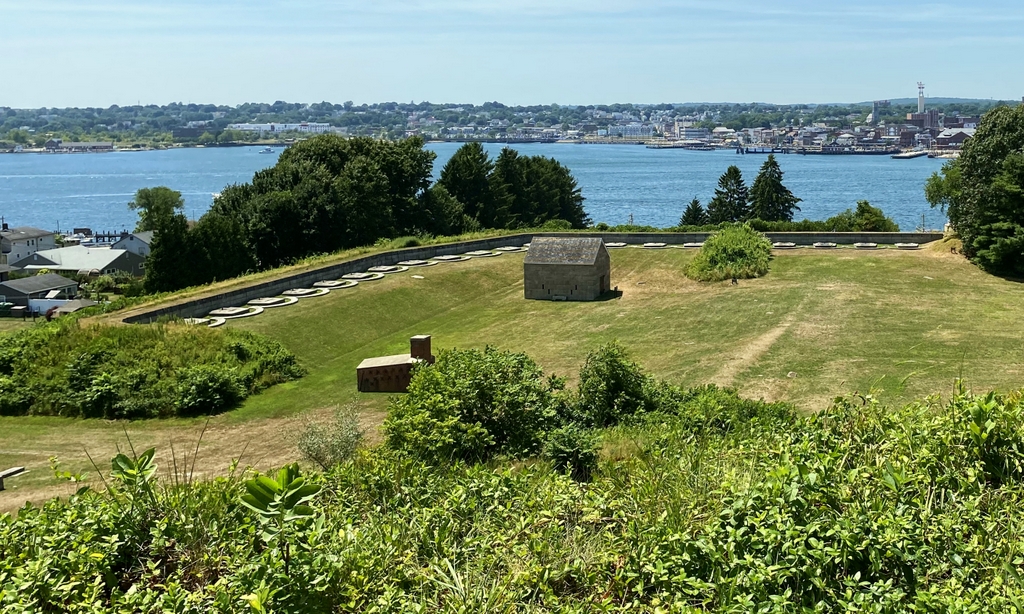The Lower Battery of Fort Griswold, seen from the southwest corner of the upper fort around 1900. Image from The Battle of Groton Heights (1903).
The scene in 2022:
As explained in more detail in an earlier post, Fort Griswold was built during the American Revolution, on a hill overlooking New London Harbor. It was completed in 1778, and it was the focal point of the Battle of Groton Heights on September 6, 1781, when British forces under the command of Benedict Arnold captured the fort and killed around 85 American soldiers in the process.
The main part of the fort was designed as a typical star fortress, with a roughly pentagonal shape that had bastions on each corner. However, it also had a lower battery, which was located just to the southwest of the fort, between the fort and the river. It was connected to the fort via a trench and a sally port in the southern wall of the fort. This battery did not see any significant action during the battle, since the British approached the fort from the southeast, rather than on the southwestern side.
After capturing the fort during the battle, the British attempted to ignite the powder magazine and destroy the fort. However, this plan failed and the fort ultimately survived. It remained in use for many years as a part of the harbor defenses, although it played a secondary role to Fort Trumbull in New London, which became the main fortification in the harbor.
Unlike Fort Trumbull, which was reconstructed several times after the Revolution, the main part of Fort Griswold would remain well preserved in its 18th century appearance. The only significant changes to Fort Griswold were at the lower battery, which is shown here in these two photos. This part of the fort was reconstructed in the early 1840s, with new emplacements for 20 guns, along with a shot furnace and a powder magazine. Both of these structures were built in 1843, with the powder magazine being used to store gunpowder and the shot furnace for heating cannonballs, in order to set wooden ships on fire upon impact.
The fort’s guns would be upgraded to Rodman guns around the time of the Civil War, and these appear to have been the types of guns that are visible in the first photo, which was taken around the turn of the 20th century. Fort Griswold would continue to be used as an active military installation until after World War II, although for much of this time it was only lightly garrisoned.
The state of Connecticut subsequently acquired the property, and in 1953 the fort and battlefield became the Fort Griswold State Park. As shown in these two photos, the lower battery has remained well preserved, with the only significant difference being the lack of guns in the present-day scene. The upper part of the fort, where these two photos were taken, is similarly preserved, and the facility is open to the public for self-guided tours, along with the nearby Groton Monument, which honors those who died in the battle.


